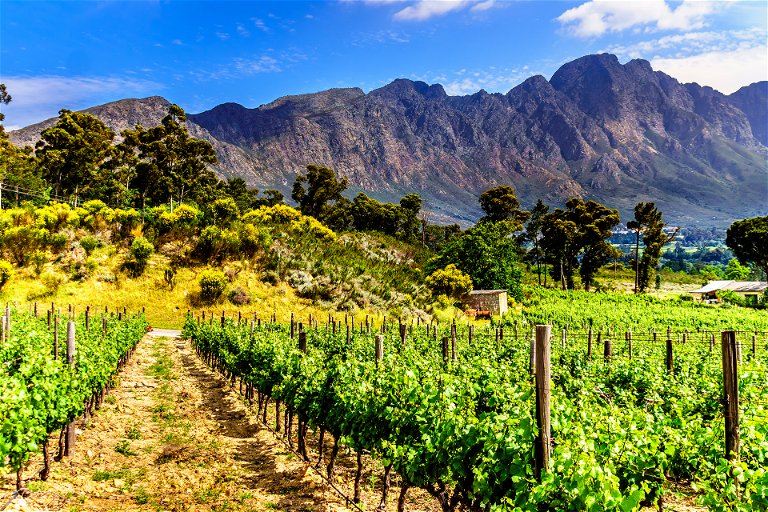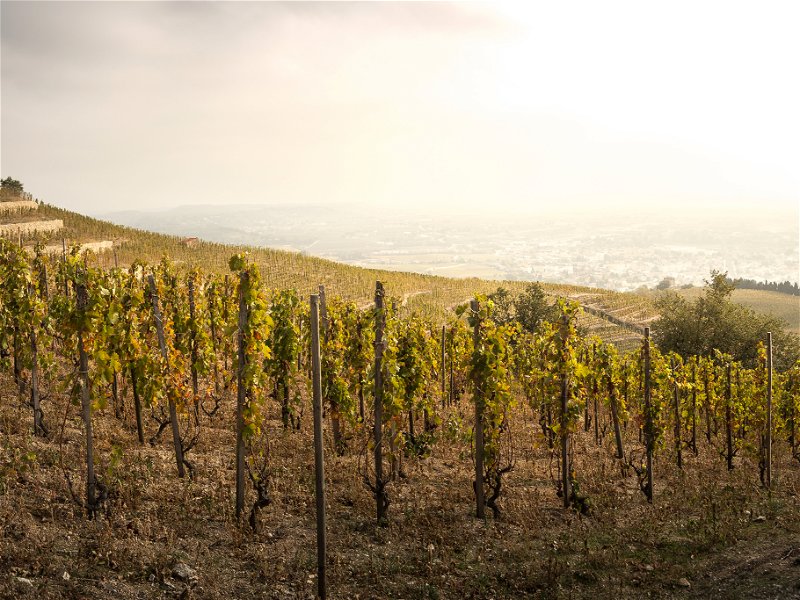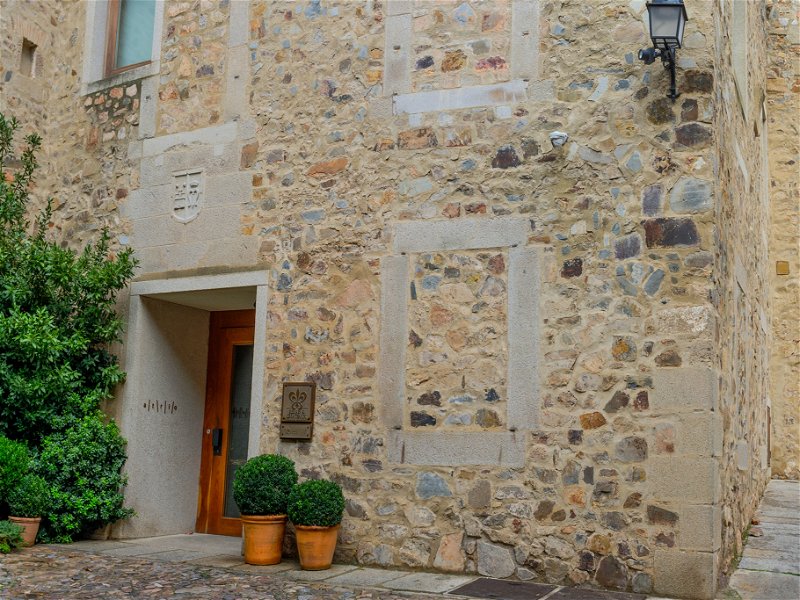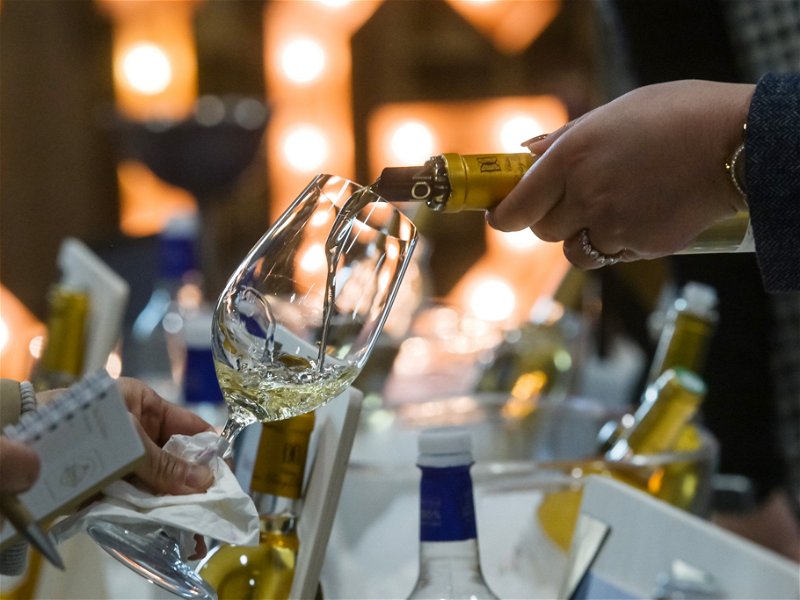Syrah in focus, part 2: journeys around the world
Part two of our series follows Syrah through Europe and beyond.
We left Syrah basking in the sun of south-western France, where our grape had become an important, although often minority, blending partner in the heady wines of Languedoc-Roussillon. For a grape that loves the warmth, it seems natural that Syrah should find a home in the two major wine-growing countries further south still: Spain and Italy. More surprisingly, however, it has also gained a foothold in Switzerland, Germany and Austria. It´s here that we will begin our international Syrah story – with cooler climate wines that have inevitably looked to the northern Rhône for inspiration, and warmer lands reflecting the fuller blends of southern France. From there, we will follow ancient Phoenician traders and French winemakers to the Levant and the north-African Maghreb, and finally head south to the winelands of the Western Cape.
As our grape reaches beyond Europe, we start to see flashes of a new name too: Shiraz. As a result of initial travels to Australia in the 1830s, with its different climates and traditions of winemaking, a new, potent style was born along with the name. From then on, winemakers had a choice: those looking to the elegance and freshness of the Rhône tending to retain the original name, and those taking a bigger, bolder approach favouring its Australian moniker. On our journey we will spot both styles, sometimes sitting cheek by jowl in the same region or producer’s portfolio. Even in the historical home of Shiraz, Australian winemakers treading a different path now release “Syrah” wines as we shall see in the third and final part of our series looking at the new world.
Echoes of the northern Rhône, only further north
Switzerland may not seem an obvious place to start in our search for Syrah. However, when you consider that the Valais canton in the south-west is in effect the upper Rhône valley, it seems entirely reasonable. Unlike the northern Rhône, blasted by the chilly Mistral, the south of Switzerland (in common with parts of Germany and Austria) is warmed by the Alpine Föhn winds. Together with sunny south-orientated slopes, this provides a climate capable of ripening the grape consistently whilst ensuring a refreshing edge. Wines like Albert Mathier & Fils’ 100% Syrah and Jean-René Germanier’s Cayas Syrah Réserve, outpaced bottlings from several more famous, and more southerly, wineries in our 2022 tasting.

Syrah is only a recent arrival in Germany but there are outposts in the warmer regions. Again, these wines tend to have the lighter northern Rhône profile: distinct acidity outlining peppery, herbal aromas. In Baden, Hanspeter Ziereisen makes his premium Jaspis Syrah; over in Pfaltz, the Knipser Estate extracts a fuller-bodied, mineral Syrah and Syrah Réserve from the region’s dry soils. Syrah is an interloper in Austria too, but the relative warmth of Burgenland allows the Ceel estate to produce several Syrah cuvées from old vine stock. Albert Gessellmann also produces a 100% Syrah there, a mineral-rich wine that scored highly in our tasting. One of the largest local producers, the über-glam Scheiblhofer winery, boasts two Syrah cuvées: the Syrah Selection and the higher-end 2020 vintage Shiraz. Full marks if you noticed the first mention of the new name – it tells you much about the style, lifestyle even, they are aiming for.
Blending in with the locals: the Syrahs of the warm south
If Spain’s warm Mediterranean climate favours Syrah’s traditional partners Garnacha (Grenache,) and Monastrell (Mourvèdre), the grape is still very much part of the landscape. Most Spanish Syrah hails from hot Castilla-La Mancha: typically bold, big-boned wines. Arguably, more interesting Syrahs come from cooler regions such as Catalunya. The Castel d’Enclus winery, founded in 2001 by local vigneron Raül Bobt, sits in the mountainous foothills of the southern Pyrenees. The soils, altitude, and high diurnal range produce finesse-rich Syrah which he then partially ferments in 12th century stone vats. The result is a wine that retains the tension of its more northerly cousins whilst adding the distinct liquorice and tobacco notes of its local heritage. He also includes Syrah in the blends made at the Ferrer Bobet winery in Priorat, one of only two areas to hold the highest regional classification in Spain (the other is Rioja).
Traditionally, most of the wine-producing areas of Tuscany allowed the dominant Sangiovese to be blended with small percentages of other varietals, local or international. But it was the so-called Super Tuscans, born in Bolgheri in the heart of the Costa degli Etruschi, that initiated a quiet revolution in the 1960s. Evocative names like Tignanello and Tenuta San Guido’s Sassicaia made free with international varietals in particular, so much so that they initially had to be released under the generic Vino da Tavola (now IGT) demarcation. Whilst Cabernet Sauvignon, Cabernet Franc and Merlot usually take the lead, Syrah plays its part too. IGT Toscana is even used to release 100% Syrah wines, for example Le Macchiole’s Scrio, a beautifully pure expression of the grape. Near neighbours Tua Rita also produce several Syrahs including elegant Per Sempre, and more experimental Keir part-fermented in stone amphorae in a nod to their Etruscan forebears.
Liquid history washes the Mediterranean basin
Following the ancient Phoenician trading routes east takes us to Lebanon’s Bekaa Valley. All the country’s major wineries have their vineyards here, including world-famous Château Musar. French influence is evident in both winemaking and varieties grown: Cabernet Sauvignon, Carignan and Cinsault for the flagship Chateau Musar red, and Syrah too (typically 35-45%) in their Musar Jeune Red. Grapes for Chateau Massaya’s Terrasses de Baalbeck are similarly grown at more than 1,000 metres above sea level. Developed in partnership with the Bruniers of Châteauneuf-du-Pape’s Domaine du Vieux Télégraphe, the wine is a GSM blend rich with black fruit, herbs and pepper. Domaine des Tourelles Rouge, made by the country’s oldest winery, matches 40% Syrah with Cabernet Sauvignon, Cinsault and Carignan: their chief winemaker spent time in both Côte Rôtie and the Medoc. Their top-level Syrah du Liban is, as the name implies, 100% Syrah.

The influence of the French is also keenly felt at the other end of the Mediterranean, in the winelands of Morocco. One of the leading wineries in a recent resurgence of the country’s wine industry is Thalvin’s Domaine Ouled Thaleb. It is located between Casablanca and Rabat, not far from the cooling influence of the Atlantic coast. They make a range of cuvées, including the 100% Syrah Tandem – a collaboration with the late Alain Graillot who, you may recall from part one, was one of the top winemakers in Crozes-Hermitage. It’s a smoky, savoury wine in which, somewhat surprisingly this far south, the fruit recedes into Rhône-like restraint.
Under southern African skies
At the other end of the continent, Syrah has grown to be South Africa’s second most popular red variety. The Stellenbosch district, with good rainfall, altitude and cooling sea breezes, makes ripe but structured wines. The classic Reyneke winery makes their 100% Syrah here with the white pepper, herbs and floral tones familiar to us from old-world expressions. Syrah specialists Hartenberg produce top-of-the-range Stork Shiraz, excellent Gravel Hill Syrah and a GSM “Rhône-style” blend, the Megan. The local Saxenburg winery produces a full-bodied Shiraz Select and a Private Collection Syrah. The latter’s 2017 vintage saw a change of labelling from “Shiraz” to “Syrah” to reflect, they say, the heightened elegance and balance of the wine.
The iconic Boekenhoutskloof winery is based nearby in the Franschhoek Valley. Their Boekenhoutskloof 100% Syrah is made with hand-harvested grapes sourced from their own Swartland vineyards where thin, slatey soils produce highly structured wines of great intensity and complexity. It has a distinctly earthy, savoury twang of black olive: the winemakers describe it as having a “spicy, floral, even feral character”. Their more accessible Wolftrap red features a hefty slosh of Syrah, too (80%) blended with Mourvèdre and a hint of Viognier. The winery also makes the easy-drinking Porcupine Ridge Syrah, and the wine that is almost a brand unto itself: The Chocolate Block. The latter is a Syrah-heavy blend (c. 75%) with Grenache, Cinsault, Cabernet Sauvignon and that signature dash of Viognier. It’s a powerful wine, but more complex and nuanced than the name suggests.














